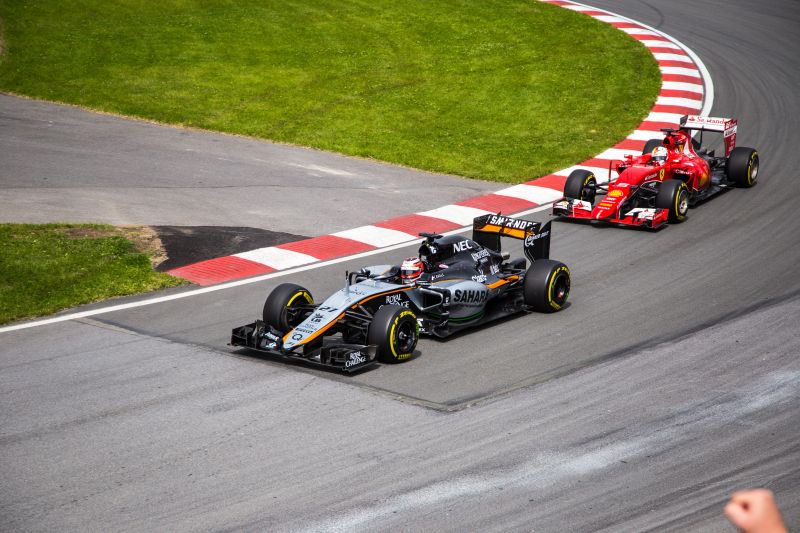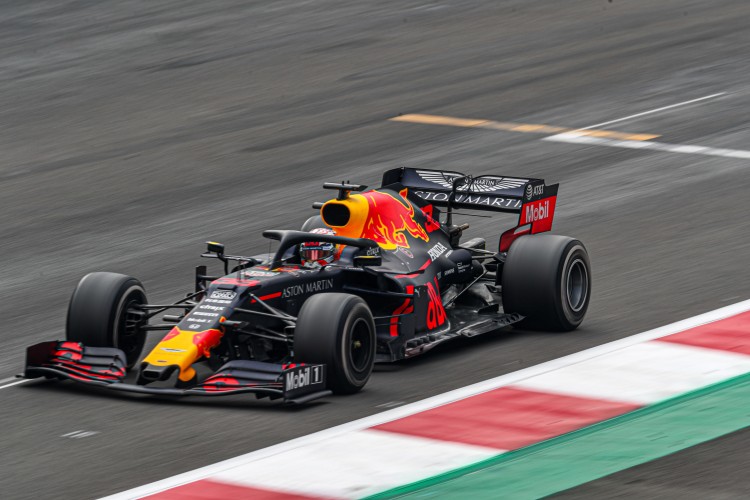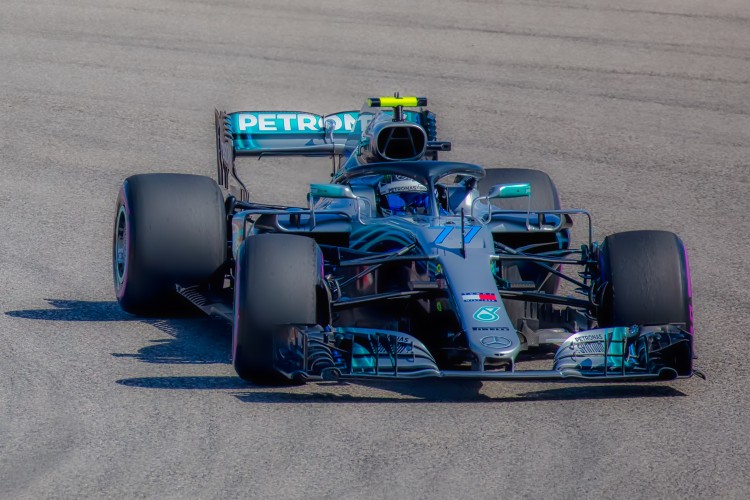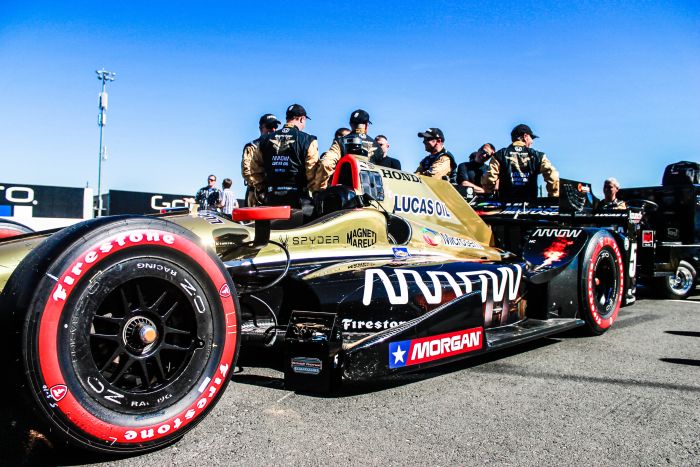
Which racing series, Formula 1 or IndyCar, seems to be more dynamic? Both of these racing series assert that they are the best open-wheeled single-seater series in the whole wide world. Both races will use cars that are virtually identical to one another.
So, which is faster: IndyCar or Formula 1? They are developed and built with mind-blowingly fast acceleration in mind from the beginning and are capable of reaching top speeds considerably in excess of 300 kilometers per hour.
Both series have well-known races, the Monaco Grand Prix for Formula One and the Indy 500 for the Indy Racing League.
There have been drivers that have competed in both series, such as Romain Grosjean and Juan Pablo Montoya. If you want to watch the races in which the quickest vehicles in the world compete, which events should you watch?
Formula 1 and IndyCar are 2 separate racing series, each of which has its own unique set of rules, technical specifications, and course layouts.
Their financial allocations are diverse, as are their engines in terms of size, top speed, and the amount of power that they produce.
They are not interchangeable in terms of their aeronautic designs, braking systems, or gearboxes.
If you wish to learn more about these 2 extremely fast sports, we encourage you to continue reading.
Table of Contents
Which Racing Series, Formula 1 or IndyCar, Is Mostly Faster?
A closer comparison of a Formula One car and an IndyCar, as well as the rules that govern each series, will provide a clearer picture of the contrasts between the two types of racing cars.
Formula 1 Car
The first season of Formula One racing took place in 1950, and the series has been running ever since. Each team competes with two vehicles, each of which has 2 drivers.
In the year 2021, there were 23 races held all around the world, and there were 20 drivers competing to be the first ones to cross the finish line. Formula
One vehicle competes on purpose-built tracks for the vast majority of its races. Street circuits are only used for a select few of the races that are staged.
If you want to know Difference Between NASCAR And IndyCar?(WHAT YOU DIDN’T KNOW), click here.
How Are the Cars Used in Formula 1 Constructed?
Formula One teams are required to have patent ownership for the components of their cars, as well as the ability to design their own chassis. The length, width, and breadth of the automobile are all governed by Formula 1 regulations.
The chassis are all made out of carbon fiber, but the aerodynamics are designed differently by each constructor despite the fact that they all use carbon fiber.
Additionally, the braking and suspension systems are not the same, and the maker of the vehicle is required to own the patents for those systems.
If you want to know What’s the Difference Between IndyCar and F1? (YOU DIDN’T KNOW), click here.
How Is an F1 Engine Constructed?

For the past 8 years, the internal combustion engines that power Formula One vehicle have been turbocharged V6 configurations displacing 1.6 liters and sporting a displacement of 1.6 liters.
The power unit also includes 4 more units, in addition to the engine and the turbocharger, which are both components of the power unit. The MGU-K is able to recapture the kinetic energy that would’ve been dissipated as a result of the braking process.
The exhaust heat is used to power the MGU-heat H’s energy recovery system.
The hybrid power unit consists of two components: a control electronics unit and a battery unit, which together are referred to as the energy store.
A Formula 1 car equipped with these hybrid systems can generate up to one thousand brake horsepower (bhp). The teams have the option of selecting an engine builder and power unit provider from Mercedes, Renault, Ferrari, and Honda.
Note: During the course of the 2021 season, each vehicle is permitted to utilize a total of 3 engines, turbochargers, MGU–Ks, and MGU–Hs across all 23 races. Additionally, each vehicle is permitted to use a total of two energy storage and 2 control electronics during the course of the season.
Any use of parts in excess of those that are permitted will result in grid penalties for the driver of the vehicle.
If you want to know What Is the Top Speed of an F1 Car? (AMAZING!!!), click here.
How Does the Transmission of a Formula One Car Work?
A transmission for a Formula One car must have one reverse gear in addition to the 8 forward gears that are required. The transmission is semiautomatic, so the gears can be changed in a fluid manner.
The gears have to hold up for a total of 6 Grand Prix races in a row. Any extra shifting of gears before the allotted six races will result in severe grid penalties.
The maximum engine speed allowed in Formula One is 15,000 revolutions per minute (rpm), however, the constraints on fuel flow and the power curve require drivers to change gears below 12,000 rpm.
Note: On the majority of circuits, each of the drivers will, on average, change gears 71 times.
How Do F1 Cars Lower Their Aerodynamic Drag?
Teams that have access to a sizable budget invest a significant amount of resources into the investigation and development of ways to improve the aerodynamics of a vehicle. Just the rear wing will set you back 150,000 dollars!
If you paid that money to a cheap essay writer, they could produce thousands of essays for you. All of this is accomplished in order to boost the car’s cornering speeds and enhance the amount of downforce it generates. A car has an edge over its competitors if it can turn corners faster than its average time.
The dimensions of a car are specified by Formula One, and the series also specifies where aerodynamic aids should be placed. Simulations and testing in wind tunnels help teams enhance the aerodynamics of their vehicles.
Because of the intricate aerodynamics of a Formula 1 car, the vehicle leaves a lot of polluted air in its wake, which makes it challenging to trail the vehicle and pass it.
If you want to know How Much Horsepower Do F1 Cars Have? (DETAILED EXPLANATION), click here.
Formula One has imposed a cost ceiling of $145 million annually for all teams in the sport in order to create a level playing field and limit the amount of money that can be spent on aerodynamics by each individual team.
This limit is going to be dropped even further as time goes on. Teams that place higher in the rankings are given fewer opportunities to participate in simulations and wind tunnel experiments.
Formula One has limited the amount of downforce that may be created by the cars by narrowing the width of the floor of the car and imposing other regulations.
In addition to this, the organization has implemented the DRS system, which enables drivers who are within one second of the vehicle in front of them to increase their pace in order to pass it. Constructors come up with creative solutions to get around these limits and make up for the lost downforce.
What Are Some of the Other Aspects of a Formula One Race, as well as the Rules that Govern It?
A Formula One car’s steering wheel is an extremely intricate part of the vehicle. It is made up of a number of buttons, paddles, thumbwheels, and dials of varying sizes.
Note: Control and/or adjustment of the differential settings, engine modes, and brake settings can be accomplished by using any one of them or a combination of them. The driver is given the ability to monitor information and data via a screen display.
Composite brake discs made of carbon fiber and composite materials are used in the vehicle’s braking system.
With the help of the power unit’s energy recovery system, a hydraulic caliper applies pressure to both the front and rear brakes.
Pirelli has been selected as the exclusive provider of tires for Formula One vehicles. Throughout the course of a season, Pirelli provides 5 various compositions for use on dry tracks.
Based on the state of the track, the team has the option of selecting any 3 distinct compounds. However, during a race, 2 distinct substances need to be utilized for at most 1 lap between pit stops in order to comply with the rule.
On tracks that are only somewhat damp, an intermediate mixture can be utilized, while a wet weather mixture should be used on tracks that are completely soaked.
Formula One cars are required to meet a minimum weight requirement of 740 kilograms, which includes the driver but does not include fuel. Before 2014, automobiles weighed far less than they do now.
When weighing automobiles, dry tires must be installed on the vehicle. Ballast is used in automobiles to obtain this desired weight.
In order to get the desired effect on the car’s weight distribution, the ballast can be positioned wherever.
If you want to know What Is The Price Of A Formula 1 Car? (ALL PARTS CALCULATED), click here.
Does Formula One Have a Budget Maximum Limit?

The Formula One Teams Association (FIA) and the Formula One teams have come to an agreement on a budget cap of 145 million dollars for the 2021 season.
As they try to get additional engine manufacturers to participate in the sport, it is anticipated that the budget will be cut even lower in the years to come. The salaries of the drivers and the top 4 personnel of the team are not included in this ceiling; they are excluded entirely.
Despite this, clubs continue to find creative ways to spend hundreds of millions of dollars throughout the season.
Research and development efforts to boost the cars’ downforce and improve their aerodynamics consume a significant amount of funding. The majority of this is accomplished through either testing in wind tunnels or through computational fluid dynamics (CFD) models.
The FIA has mandated, in an effort to level the playing field, that a team’s allotted testing time for aerodynamics would decrease according to the position it finishes in the race.
If you want to know How Much Does an F1 Pit Crew Member Earn? (INTERESTING FACTS), click here.
How Does an IndyCar Function?

Every single IndyCar is built on the same chassis. The carbon fiber Dallara DW12 chassis is used by all of the drivers in the race, even though each team may have 5 or 6 drivers racing in the event.
The grid for Indy car races is somewhat more adaptable than that of Formula 1 due to the fact that at least 24 drivers compete in each event. It is possible that up to 33 drivers may compete in the Indianapolis 500.
When it comes to the engine that will power their vehicles, the rivals have to choose between Honda and Chevrolet. The vehicles have a V6 engine that is twin-turbocharged and 2.2 liters in capacity.
These engines produce anything from 550 to 700 brake horsepower (bhp). The kind of boost that is used in conjunction with the track will determine the amount of force that is produced.
When racing on ovals, drivers typically use a power setting that is lower than normal for reasons of engine longevity and security.
IndyCars have gearboxes with 6 forward speeds or a reverse gear that is required to be used. They can choose between Firestone’s wet and dry tires depending on the conditions.
A wide variety of compounds are used to make dry tires. At some point during their time on the street or road course, drivers are required to switch between dry and wet tires. When racing on oval tracks, drivers are not permitted to use tires that are wet.
The type of track will determine the number of pistons that are utilized in the Brembo brakes that are utilized.
Note: The brakes and suspension systems used by IndyCars were designed specifically for each track. For instance, a suspension system designed for racing on an oval track may not be appropriate for use on a road course because of the different surface conditions.
It’s possible that the one utilized for a road course won’t work well for a race on a street circuit. The same principle applies to the brakes.
If you want to know How Many F1 Drivers Have Died? (CHRONOLOGICAL), click here.
Is Each Car In the IndyCar Series the Same?
In order to keep everyone on an equal footing and ensure fair competition, the cars used in the IndyCar series are significantly different from those used in the Formula One series.
IndyCars all share the same chassis, and their engines and gearboxes are very similar to one another. However, there is a significant amount of contrast between them.
It is allowed for IndyCar Series teams to design and manufacture their own brake ducts and suspensions, as well as any other component of their cars. This is required for vehicles that compete in races on ovals, street circuits, and road courses.
On oval tracks, the sealing gaskets will be made of a different material, and the brake ducts will be varied based on the kind of circuit that is being used.
In addition, there will not be any anti-knock springs put behind the pistons. When driving on street circuits, a car’s performance can be improved significantly by installing a better suspension system.
To accommodate the different courses, the cars’ starting weights are adjusted accordingly. Based on the track, there will be adjustments made to the aero kits, the brakes, the suspension, and the amount of power generated.
On oval tracks and street circuits, the automobile could weigh 730 kilograms, but when it is driven on speedways, the weight will be reduced to 716 kilograms. Although speedways will continue to make use of narrow aerofoils, other types of tracks will transition to multi-element wings in their place.
If you want to know How Much Does a NASCAR Car Cost? (IN DETAIL), click here.
How Does the IndyCar Push to Pass Function?

In order to improve overtaking, Formula One vehicles employ a system called DRS. Indy cars, on the other hand, utilize a technique called the “push to pass,” which was introduced in 2009.
The technology gave drivers the ability to add up to 40 horsepower to the car’s output, which was quite useful. However, there are restrictions placed on the number of times the technology may be utilized.
The rules were altered in 2017 by the governing body to permit drivers to employ the mechanism for a total of 200 seconds throughout a race. Previously, this limit had been set at 60 seconds.
Because of this, drivers were able to back out of an attempt to pass another car on any given lap. This would conserve valuable seconds for a further effort to pass another competitor later on in the race.
Which Type of Race Car Is Faster, an IndyCar or a Formula One Car?
It is important to keep in mind that an F1 vehicle and an Indy car are constructed in very different ways because they are intended to compete in quite distinct types of motorsport.
They compete on a variety of circuits, and each race is governed by a unique set of rules and regulations. In addition, they compete across a wide variety of distances and under a variety of time constraints in order to complete their races.
There is also a significant disparity in the budgets that are available to each of them.
If you want to know What is Formula 1 DRS? (THINGS YOU DIDN’T KNOW), click here.
What Kinds of Racing Surfaces Do the Two Cars Compete on?

These racing series use road and street tracks for their competitions. The ovals, street circuits, and road courses that make up the IndyCar Series are a stark contrast to the purpose-built tracks and street circuits that are used for the Formula One championship.
The suspension setup of IndyCars can be adjusted or changed based on the surface of the circuit they are racing on. The design and production of a suspension for an F1 car is an expensive endeavor.
No Formula One manufacturer will be able to modify the suspension of an F1 vehicle in time for a race that will take place on a different kind of surface.
Because F1 races take place on more challenging courses with fewer straightaways, the vehicles used in these competitions feature superior braking systems, quicker acceleration, and greater downforce.
When going down significantly longer straights, an IndyCar relies on its momentum to keep up its speed because the cars are heavier than those used in F1. The curves on the ovals are significantly more expansive than those on an F1 track.
What Is the Distance of the Two Races?
While a Formula One vehicle is optimized for competition over a distance of 305 kilometers, IndyCar races are held over a distance of 805 kilometers. However, a Formula One race has to be over in less than two hours.
In the event that a red flag has been displayed for any reason, the race will be called off at the conclusion of the three-hour time limit. As soon as the last competitor crosses the finish line, the race will be called off because it has reached its end.
Based on the track that the vehicles are racing on, an IndyCar race could go for more than 3 hours or even longer.
The fuel tanks of Formula One cars can only hold enough to last for one race, and drivers are not allowed to refuel their vehicles during competition.
Since the race covers such a significant distance from beginning to end, pit stops to refuel Indy cars are strategically placed throughout the event.
After a string of high-profile accidents, the refueling pit stop in Formula One was eliminated as a precautionary measure.
Concluding
Formula One automobiles are purpose-built for rapid acceleration and precise braking on racing tracks that are constructed specifically for them. The heavier Indy car is intended for speed along longer straights, which allows it to travel at higher speeds.
Given these significant disparities between the two car layouts, do you think it would be fair to race either car on the other’s track?
On a track designed for Formula One competition, an F1 car will consistently be faster than an IndyCar. An F1 car has significantly better acceleration than an IndyCar, and as a result, it will easily take the lead at the start of the race over the IndyCar.
It is also able to tackle the corners at quicker speeds thanks to the increased downforce it possesses. Add to that the fact that it has a significantly more effective braking system, which enables it to readily save time when it is engaged in braking.
Formula One cars are not designed to be driven at high speeds for extended periods of time.
Without significant adjustments, an F1 car will not be able to maintain its performance during the entirety of the extended Indy race distance. It is highly likely that the engine will seize up, and the suspension will not hold up.
Every vehicle serves its intended job well since that is why it was conceived and constructed. On a track designed specifically for Formula One racing, a car designed for IndyCar competition is doomed to fail. In a similar vein, an IndyCar will not fare well on a Formula One track.
The races and the automobiles are both exciting and quick. In spite of the fact that IndyCar has a huge fan base in the United States, Formula One remains the more popular racing series on a global scale.
Simply put, we let automobiles compete in the areas and under the conditions that are most favorable to them. It is not necessary for us to wrack our brains in order to determine which car is the quicker of the two.
